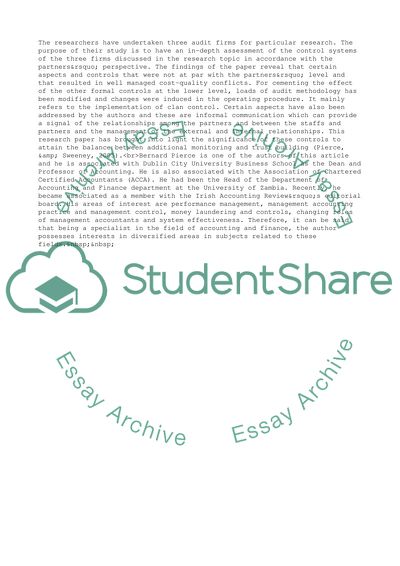Cite this document
(Management Control in Audit Firms Partners Perspectives Case Study, n.d.)
Management Control in Audit Firms Partners Perspectives Case Study. Retrieved from https://studentshare.org/business/1744633-a-critical-analysis-or-a-comparative-critical-analysis
Management Control in Audit Firms Partners Perspectives Case Study. Retrieved from https://studentshare.org/business/1744633-a-critical-analysis-or-a-comparative-critical-analysis
(Management Control in Audit Firms Partners Perspectives Case Study)
Management Control in Audit Firms Partners Perspectives Case Study. https://studentshare.org/business/1744633-a-critical-analysis-or-a-comparative-critical-analysis.
Management Control in Audit Firms Partners Perspectives Case Study. https://studentshare.org/business/1744633-a-critical-analysis-or-a-comparative-critical-analysis.
“Management Control in Audit Firms Partners Perspectives Case Study”, n.d. https://studentshare.org/business/1744633-a-critical-analysis-or-a-comparative-critical-analysis.


